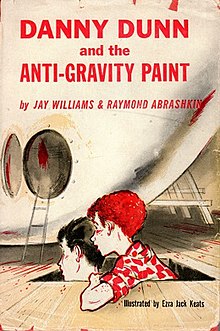안틸로카프리대
Antilocapridae| 안틸로카프리대 시간 범위: | |
|---|---|
 | |
| 몬태나주 포트 키오에 있는 프롱혼즈 | |
| 과학적 분류 | |
| 도메인: | 진핵생물 |
| 킹덤: | 애니멀리아 |
| 문: | 초르다타 |
| 클래스: | 포유류 |
| 순서: | 아르티오닥틸라 |
| 하위 순서: | 반추동물 |
| 인프라오더: | 페코라 |
| 가족: | 안틸로카프리대 J. E. 그레이, 1866 |
| 활자속 | |
| 안틸로카프라 오드, 1815 | |
| 속 | |
안틸로카프리대(Antilocapidae)는 북아메리카 고유의 아티오닥틸류 과입니다.현존하는 가장 가까운 친척은 기린입니다.[1][better source needed]오늘날 오직 한 종인 프롱혼 (Antilocapra america)만이 살고 있고, 다른 모든 종들은 멸종되었습니다.살아있는 프롱혼은 영양을 닮은 작은 반추동물입니다.
묘사
대부분의 면에서 안티오케이프리드는 다른 반추동물과 비슷합니다.그들은 질긴 식물 물질을 소화하기 위한 복잡하고 네 개의 방이 있는 위, 갈라진 발굽, 그리고 작고 갈린 뿔을 가지고 있습니다.그들의 뿔은 진짜 뿔이 난 칼집을 가지고 있다는 점에서 보비드의 뿔과 닮았지만, 독특하게도, 그들은 번식기 밖에서 떨어져 나갔고, 그 후 다시 자라납니다.그들의 옆쪽 발가락은 보이드보다 훨씬 더 줄어들었고, 숫자 자체는 완전히 사라졌고, 대포 뼈만 남았습니다.안티로카프리드는 대부분의 다른 반추동물들과 같은 치과 공식을 가지고 있습니다: 0.0.3.33.1.3.3.
분류
안티로카프리드는 페코라류의 반추동물입니다.현존하는 다른 페코란은 기린과(기린), 사슴과(사슴과), 모기과(머스크 사슴과), 그리고 보비대(소, 염소, 양, 들소와 동맹, 영양)입니다.페코란류 사이의 정확한 상호관계는 주로 기라피대(Giraffidae)의 위치에 초점을 맞추어 논의되어 왔지만, 2019년 대규모 반추동물 유전체 염기서열 분석 연구에서는 아래 [2]클래도그램에서 볼 수 있듯이 안틸로카피대(Antilocapidae)가 기라피대(Giraffidae)의 자매 분류군임을 시사했습니다.
| 반추동물 |
| ||||||||||||||||||||||||||||||
진화
프롱혼의 조상들은 [2]미오세 초기의 기라피드에서 갈라졌습니다.이것은 아열대 삼림지대를 개방된 사바나 [2]초원으로 변화시킨 기후 변화 이후 비교적 늦은 포유류 다양화의 일부였습니다.
안티로카프리드는 구세계에서 진화한 보비드와 비슷한 틈새를 메운 북아메리카에서 진화했습니다.마이오세와 플라이오세 동안, 그들은 다양하고 성공적인 집단이었고, 많은 다른 종들을 가지고 있었습니다.어떤 것들은 이상한 모양의 뿔을 가지고 있거나, 네 개, 심지어 여섯 개의 뿔을 가지고 있었습니다.매끄럽고 약간 구부러진 뿔을 가진 오스보르노케로스, 납작한 뿔을 가진 파라코소릭스, 부채꼴 모양의 뿔을 가진 라모케로스, 그리고 네 개의 [3][4]뿔을 가진 하요케로스 등이 그 예입니다.
종.
- 아과 안틸로카프리나과
- 부족 안틸로카프리니
- 속 안틸로카프라
- 안틸로카프라아메리카나 - 프롱혼
- 아메리카나속 (A. a. a. a. 아메리카나속) - 커먼프롱혼
- A. a. mexicana - 멕시칸 프롱혼
- 반도(A. a. a. peninsulais) - 바하캘리포니아프롱호른
- A. a. sonoriensis - Sonoran pronghorn
- A. a. oregona - 오리건 프롱혼
- ◦안틸로카프라퍼시픽[5]
- 안틸로카프라아메리카나 - 프롱혼
- 텍소케로스속[6]
- 텍소케로스알티덴스
- 텍소케로스에덴시스
- 텍소케로스가이모넨시스
- 미노레이속
- 텍소케로스 텍사누스
- 텍소케로스바우하니
- 속 안틸로카프라
- 일링고세라티니족
- 프로안틸로카프리니족
- 스토코세라티니족
- †Capromeryx속 - (주니어 동의어 Breameryx)
- Capromeryx arizonensis - (주니어 동의어 B. arizonensis)
- 카프로메릭스 퍼시퍼 - (주니어 동의어 B. minimus, C. minimus)
- Kapromeryx gidleyi - (주니어 동의어 B. gidleyi)
- 카프로메릭스 멕시카나 - (주니어 동의어 B. 멕시카나)
- 카프로메릭스 마이너 - (주니어 동의어 B. minor)
- 카프로메릭스툰토넨시스
- 세라토메릭스속[7]
- 세라토메리x프렌티체이
- 하요케로스속
- 하요세로스바보리
- 하요세로스팔켄바치
- †헥사메릭스속
- 헥사메릭스 심프슨티
- γ헥소벨로머릭스속[7]
- 헥소벨로메릭스 프릭키
- 심프슨과
- 스토코케로스속
- Stockoceros conklingi (주니어 동의어 S. onusrosagris)

스톡코케로스 콘클링기 골격
- Stockoceros conklingi (주니어 동의어 S. onusrosagris)
- 테트라메릭스속
- 테트라메릭스 어빙토넨시스
- 테트라메릭스 녹센시스
- 테트라메릭스무세리
- 테트라메릭스 슐레리
- 테트라메릭스타쿠바옌시스
- †Capromeryx속 - (주니어 동의어 Breameryx)
- 부족 안틸로카프리니
- 메리코돈티아과
- 코소릭스속
- 코소릭스 세로엔시스
- 코소릭스 퍼카투스
- 코소릭스실포넨시스
- 메리아모케로스속
- 메리아모케로스 코로나투스속
- 메리코두스속 (syn.메리세로스 및 서브메리세로스)[9][10]
- 크루젠시스
- 갈고리꼬리원숭이
- 메리코두스조라키
- 메리코더스 장조
- 메리코더스 미니무스
- 메리코더스 마이너
- 네카투스속 (Mercodus necatus)
- 메리코두스넨젤렌시스
- 프로트로무스속
- 사불로니스
- 메리코두스 워레니
- 파라코소릭스속[11]
- 알티코르니스속 (Paracosoryx alticornis)
- 버겐시스
- 파라코소릭스 도웨센시스
- 파라코소릭스 퍼롱기
- 파라코소릭스록소케로스
- 네바덴시스
- 파라코소릭스윌리엄스
- 라모케로스속
- 브레비코르니스속 (Ramoceros brevicornis)
- 라모케로스마타에
- 라모케로스메리아미
- 라모케로소보르니
- 라모케로스팔마투스속
- 라모케로스라모스
- 코소릭스속
참고문헌
- ^ "Pronghorn (Antilocapra americana) Fact Sheet: Taxonomy & History". International Environment Library Consortium. Retrieved 8 August 2020.
- ^ a b c Chen, L.; Qiu, Q.; Jiang, Y.; Wang, K. (2019). "Large-scale ruminant genome sequencing provides insights into their evolution and distinct traits". Science. 364 (6446): eaav6202. Bibcode:2019Sci...364.6202C. doi:10.1126/science.aav6202. PMID 31221828.
- ^ Savage, RJG; Long, MR (1986). Mammal Evolution: an illustrated guide. New York: Facts on File. pp. 232–233. ISBN 0-8160-1194-X.
- ^ Palmer, D., ed. (1999). The Marshall Illustrated Encyclopedia of Dinosaurs and Prehistoric Animals. London: Marshall Editions. p. 280. ISBN 1-84028-152-9.
- ^ Richards, G.D.; McCrossin, M.L. (1991). "A new species of Antilocapra from the late Quaternary of California". Geobios. 24 (5): 623–635. doi:10.1016/0016-6995(91)80027-W.
- ^ a b Davis, E.B.; Calède, J.J. (January 2012). "Extending the utility of artiodactyl postcrania for species-level identifications using multivariate morphometric analyses". Palaeontologia Electronica. 15 (1): 1A:22p. Retrieved 13 August 2020.
- ^ a b c Semprebon, G.M.; Rivals, F. (September 2007). "Was grass more prevalent in the pronghorn past? An assessment of the dietary adaptations of Miocene to Recent Antilocapridae (Mammalia: Artiodactyla)". Palaeogeography, Palaeoclimatology, Palaeoecology. 253 (3–4): 332–347. doi:10.1016/j.palaeo.2007.06.006.
- ^ Carranza-Castenada, O.; Aranda-Gomez, J.J.; et al. (April 2013). "The Early-Late Hemphillian (HH2) faunal assemblage from Juchipila Basin, State of Zacatecas, Mexico, and its biochronologic correlation with other Hemphillian faunas in central Mexico" (PDF). Contributions in Science. 521: 13–49. doi:10.5962/p.226782. S2CID 53606726. Archived from the original (PDF) on 2019-02-27. Retrieved 13 August 2020.
- ^ Janis, Kathleen M. (1998). Evolution of Tertiary Mammals of North America: Volume 1, Terrestrial Carnivores, Ungulates, and Ungulate Like Mammals. Cambridge University Press. p. 496.
- ^ Prothero, Donald R. (2007). The Evolution of Artiodactyls. Johns Hopkins University Press. p. 232. ISBN 9780801887352.
- ^ Beatty, B.L.; Martin, L.D. (June 2009). "The earliest North American record of the Antilocapridae (Artiodactyla, Mammalia)". PalaeoBios. 29 (1): 29–35. Retrieved 13 August 2020.





